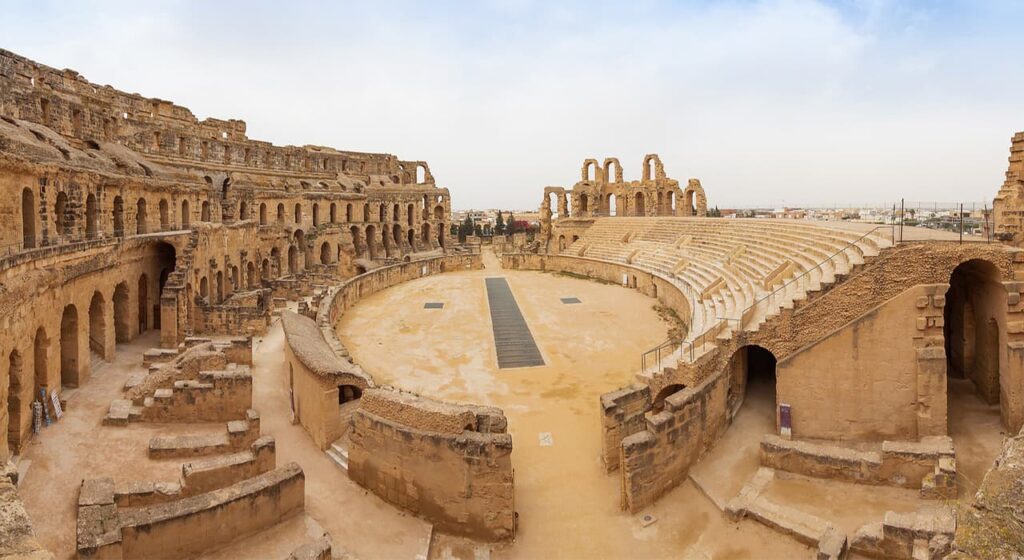
Brief history of the amphitheater
The amphitheater was a spacious building, mostly oval-shaped, used by the Romans for gladiatorial competitions, wildlife fighting and other spectacles. The amphitheater differed from the Theatre of Dramatic Performances (theatrum) in that while the theatre had only a semicircle of seats facing the stage, the amphitheater was completely surrounded by them; hence the name (buckwheat, “all round”).
At first, amphitheaters were wooden and temporary structures, like a modern racetrack. Yet they seem to have been of enormous size, as Tacitus mentions one in Fiden, during the reign of Tiberius, whose collapse is said to have caused the death or injury of 50,000 spectators. However, stone amphitheaters began to be built in an earlier period, the first of which was built in 31 BC. e. on the instructions of August.
The Flavian amphitheater in Rome, known as the Colosseum because of its large size, was started by Vespasian and finished by Titus in AD 80. It was the largest structure of its kind, and fortunately survived best. It spans about five acres and was able to accommodate 50,000 spectators. Its longest length is 612 feet and its largest width is 515 feet, the corresponding figures for Albert Hall in London-270 and 240. On the occasion of his dedication by Titus, 5,000 wild animals were killed in the arena, the games lasted almost a hundred days.
The appearance of the Colosseum is about 160 feet in height and consists of three rows of columns, Doric, Ionian and Corinthian, and, above all, a number of Corinthian pilasters. Between the columns are arches that form open galleries throughout the building, and between each additional pilaster of the upper tier-window. In addition to the podium, there were three tiers or seat stories corresponding to external stories. The first of them was supposed to contain 24 rows of seats, and the second-1
The appearance of the Colosseum is about 160 feet in height and consists of three rows of columns, Doric, Ionian and Corinthian, and, above all, a number of Corinthian pilasters. Between the columns are arches that form open galleries throughout the building, and between each additional pilaster of the upper tier-window. In addition to the podium, there were three tiers or seat stories corresponding to external stories. The first of them was supposed to contain 24 rows of seats, and the second-16. They were separated by a high wall from the third floor, where the population lived. The podium was the galleries surrounding the arena in which the emperor, senators and vestals had seats.
The building was covered with a temporary awning or wooden roof called a velarium. The open space in the center of the amphitheater was called the arena, which means sand in Latin, because during performances it was covered with sand or sawdust.
The taste for excitement from the amphitheater in Rome naturally spread throughout the provinces, and large amphitheaters were erected not only in the provincial cities of Italy, as in Capua, Verona, Pompeii, Pozzuoli, etc., but also as Arles, him and Frejus in France; in Italica, near Seville, in Spain; and at Circencester, Silchester, and Dorchester, in England.